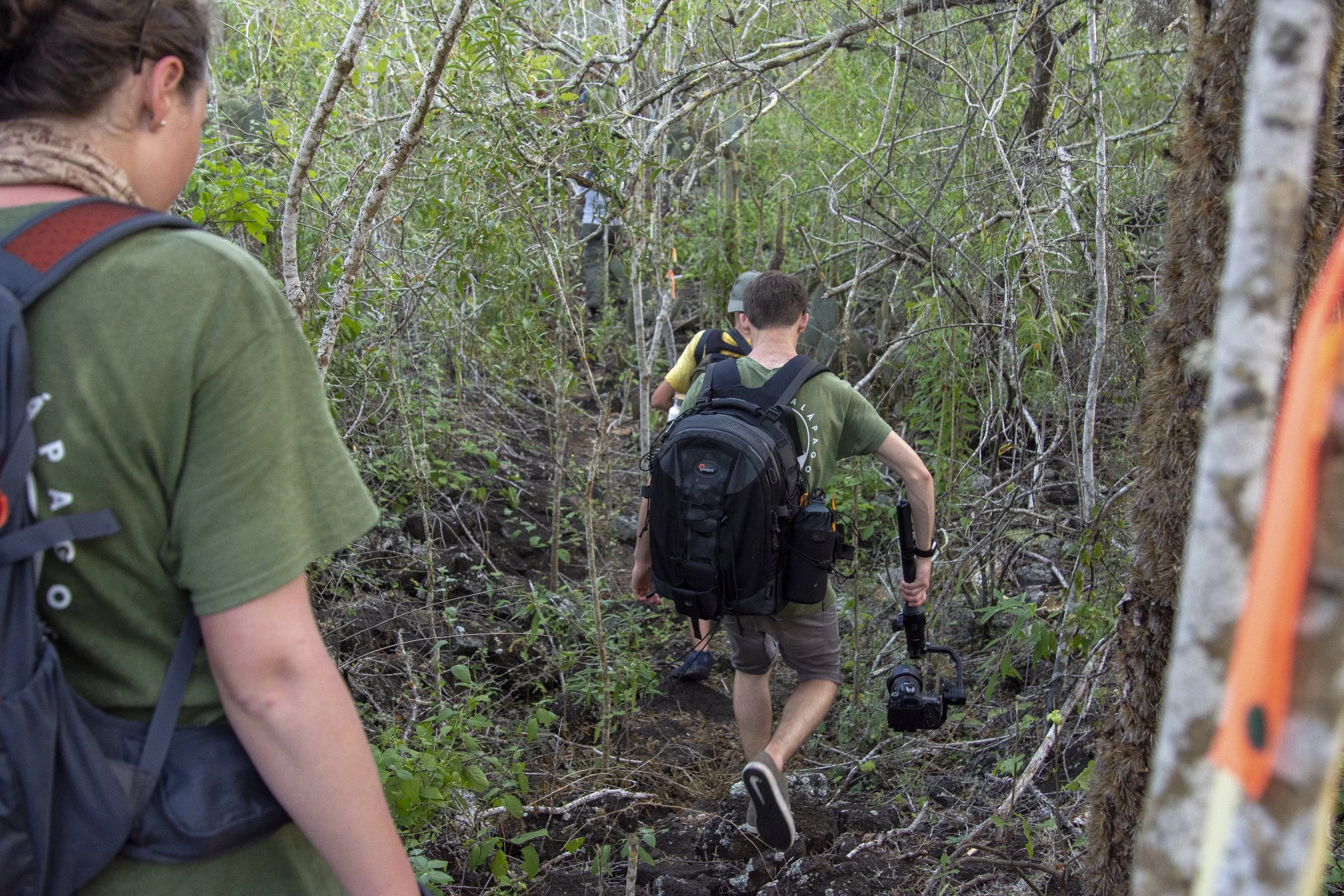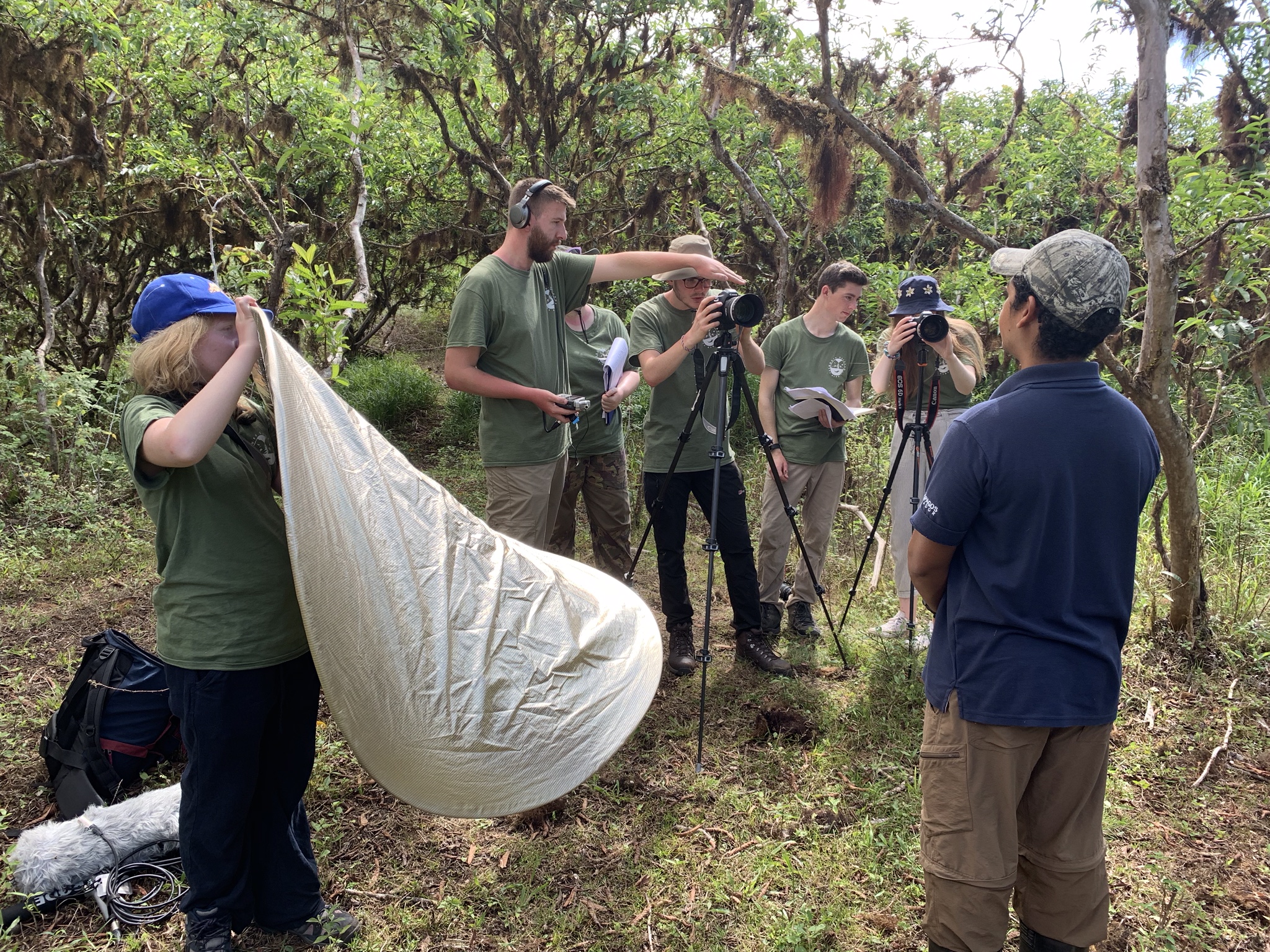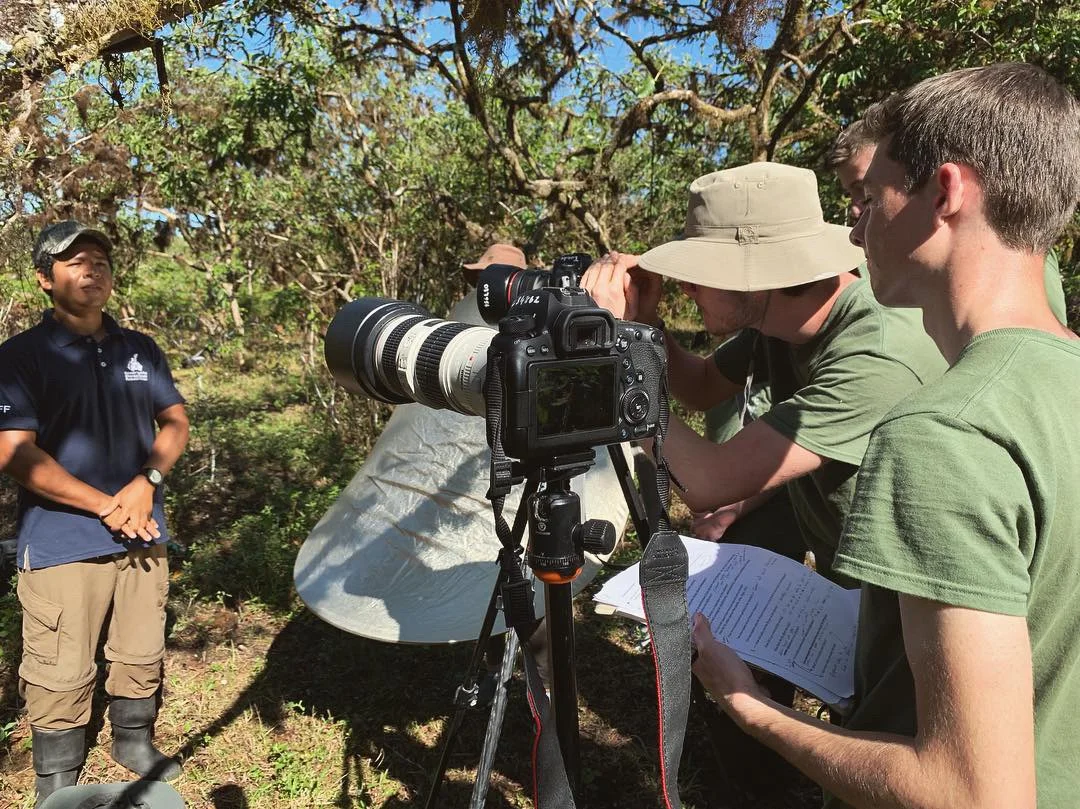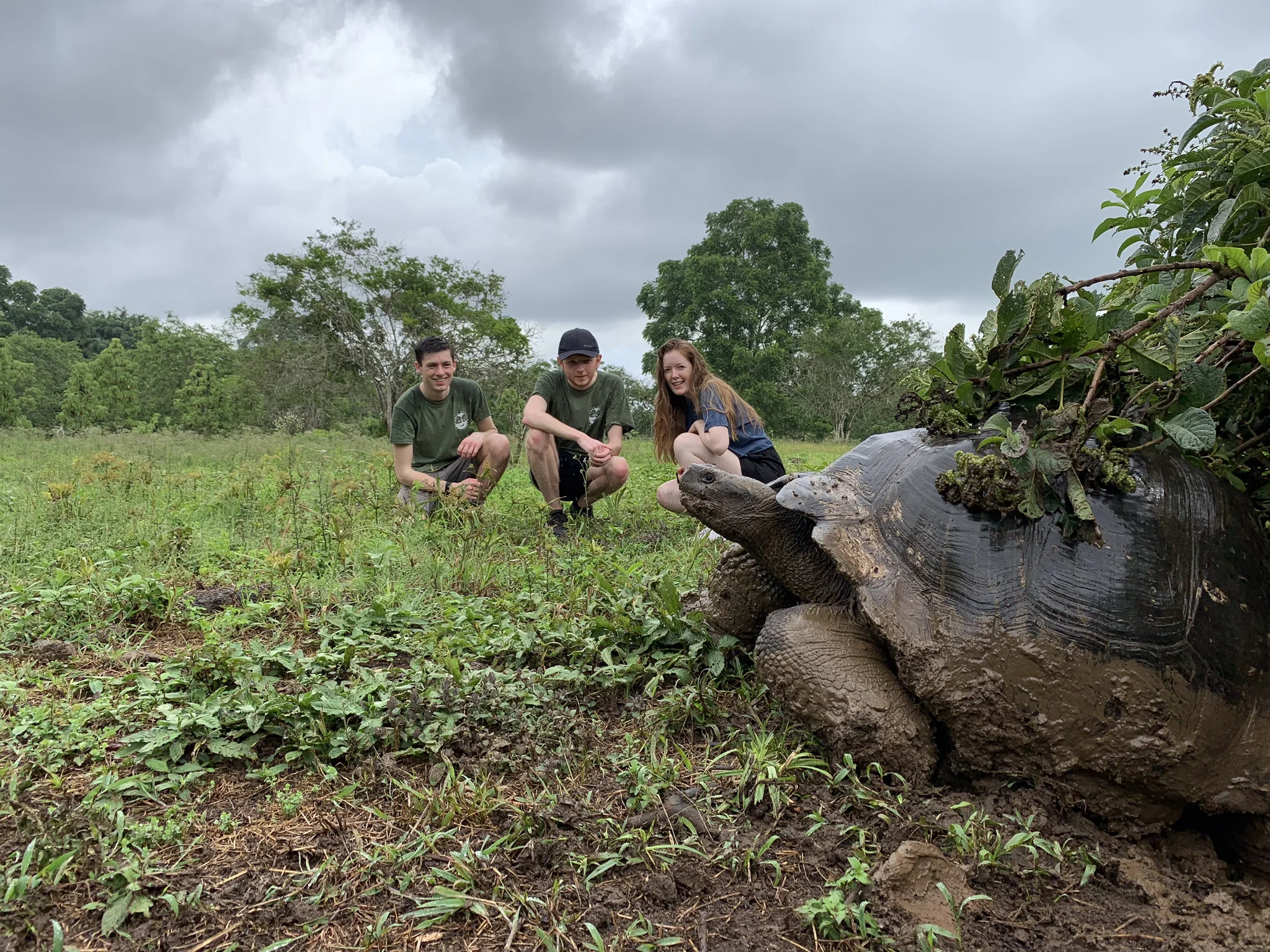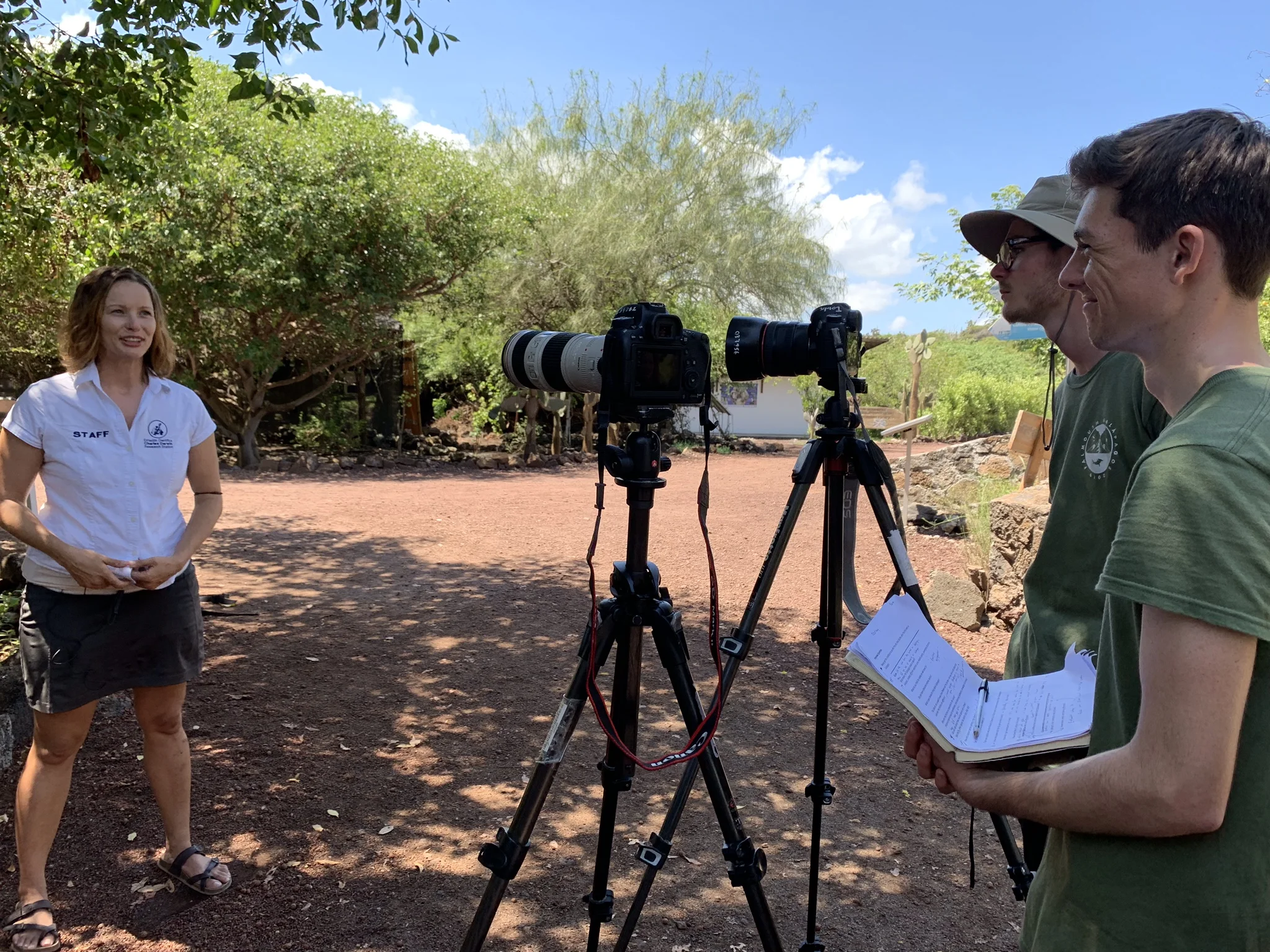Galápagos Expedition
In April 2019, I had the privilege to visit the spectacular Galápagos Islands. We were commissioned by the Charles Darwin Foundation to create a film about the threat of invasive species to the Galápagos ecosystem.
Birthed by fire and scorched by the equatorial sun, these volcanic islands would presumably be no more than a parched wasteland. Yet remarkably, life thrives here in abundance. The collision of cool waters from the Humboldt Current and warmer currents flowing from Panama create an upwelling bursting with nutrients. These ocean veins serve as the lifeblood of the Galápagos Islands, and it was upon these very currents that resilient creatures drifted in from the mainland. The islands’ isolation has meant that many of these animals are found nowhere else on Earth. In fact, it’s such a specialised environment that 97% of all the resident reptiles and land mammals are unique to the islands.
It’s paradise; home to the rarest penguin on earth, pterodactyl-like frigatebirds that fill the sky and bizarre blue-footed boobies with bright turquoise feet, which they use to attract a mate. The islands were first discovered less than 500 years ago, and with humans as a relatively new addition to the landscape, many of these animals haven’t evolved to fear us. Therefore, most animals here will happily crawl up to your feet or swim past you; which of course makes for some pretty unforgettable wildlife experiences.
These islands are most well-known for the finches, made famous by Charles Darwin. Darwin based much of his evolutionary theory on these small birds as he noticed each finch species had evolved unique bills to fulfil their specific feeding requirements. Adaptations like this take place over the course of thousands of years. This means that sudden changes that threaten particular species are extremely damaging to a population as they simply would not have the time to adapt to the change. Sadly, a deadly new island invader is jeopardising these finches’ very existence. Worse still, it not only effects the finches; 22 out of the 35 land birds on Galápagos can fall victim to this horrendous parasite.
It’s therefore surprising to know that such a destructive organism is no bigger than a house fly. In fact, it’s seemingly so insignificant that (at the time of filming) it doesn’t even have a common name yet… but the scientists at CDF are calling it the vampire fly. Scientifically known as Philornis downsi, this parasitic fly lays its eggs in the nests of the native Galápagos land birds. The larva then begin to eat the tissue in the nasal cavity of the developing baby birds, causing the mortality of up to 76% of nestlings. The few birds that survive this horrific ordeal are scarred with deformities to the head and beak.
This is an enormous threat facing the unique wildlife of Galápagos. But thankfully there is hope. Dedicated teams of scientists are committed to eliminating this introduced species from the ecosystem in the Galápagos. This research even has global outreach, including 22 institutions from 10 different countries, to research the biology and control methods of this little-known fly.
We were shown around the labs where researchers were experimenting to find ways to sterilise populations via radiation, or even whether introducing biological control is a viable solution. We trekked through the unforgiving arid zones with field researcher Courtney Pike to monitor nests and ventured up into the highlands with David Anchundia to see the stunning, but increasingly rare, little vermillion flycatcher which became a particular focus in the film.
Filming engaging interviews with passionate researchers and conservationists further brought emotive ties, which is essential if we want people to care about this issue. Philornis downsi is a huge threat facing the wildlife of Galápagos and the 62% of land birds it parasitises. But seeing the pioneering work first-hand and the incredible people who are dedicating their lives to control Philornis gave me a tremendous amount of hope. Their work is literally evolving conservation.
You can watch the full film For the Love of Birds here.



